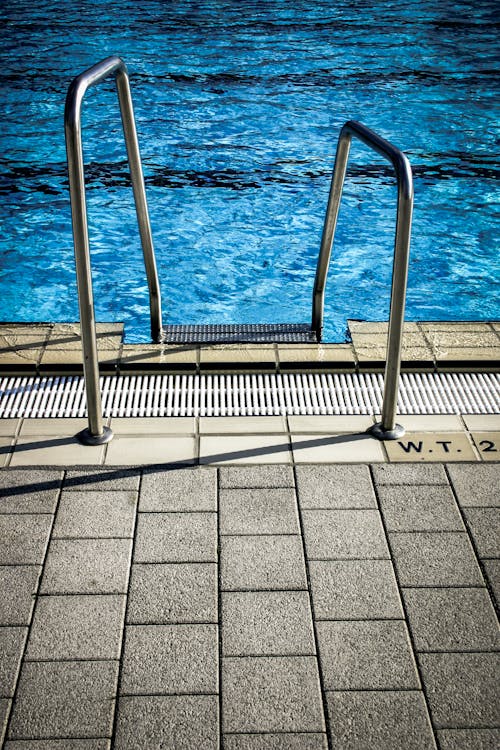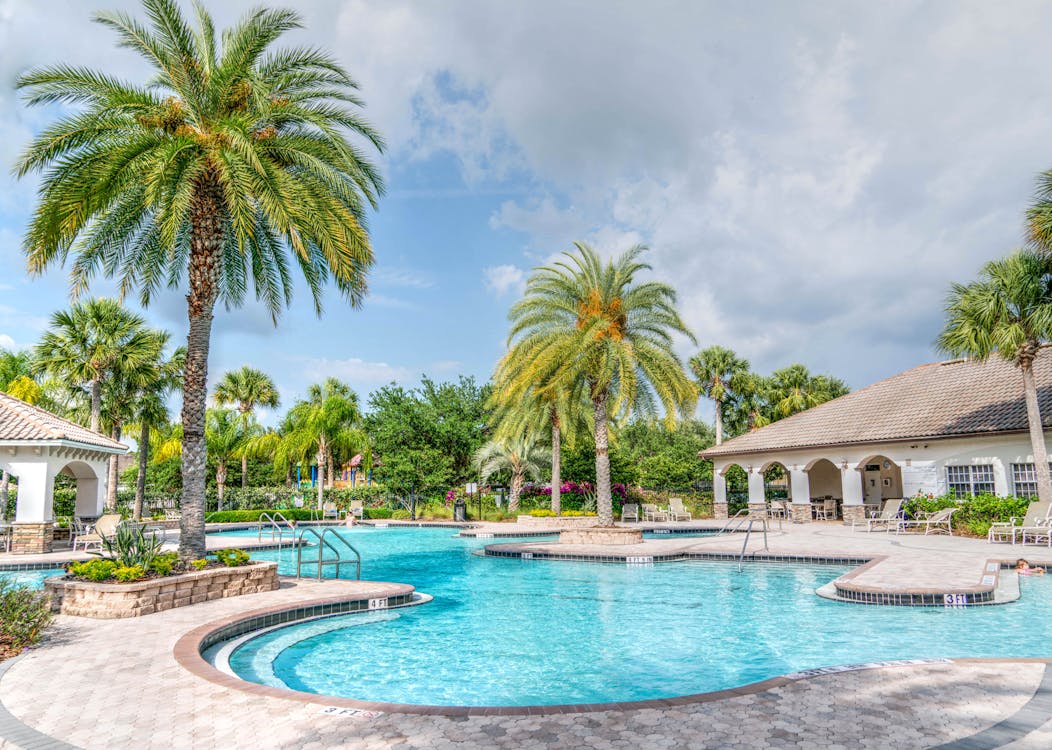Let’s show you a treatment that is getting popular among pool owners: salt electrolysis.
Among the swimming pool water treatment crowd, electrolyzers have been successfully equipping many swimming pools for many years.
We will first explain how it works and the advantages of salt treatment… and what to plan if you want to treat your swimming pool with this system. The electrolyzer also allows you to automate your swimming pool and take full advantage of your swimming moments.

How electrolysis works in your salt pool treatment
The electrolyzer diffuses a weak direct electric current at low voltage in a saline solution, thus producing sodium hypochlorite (active chlorine).
Then the electrolysis of saltwater separates the salt molecule (NaCl) into chlorine and sodium ions. Combined with water, this chlorine (sodium hypochlorite) allows the permanent destruction of pathogenic germs or algae, as well as organic matter and nitrogen residue from swimmers (sweat, urea, etc.).
Once this disinfecting action is complete, this natural chlorine recombines with the sodium present in the water and naturally reforms the salt, under the action of UV rays from the sun. This process is continuous.

The advantages of salt treatment
The salt chlorinator provides instant and persistent disinfection of swimming pools, while effectively protecting them from algae. Unlike organic chlorine (long-lasting pebbles, shock tablets, etc.), sodium hypochlorite is chlorine that is produced without a stabilizer, thus eliminating any risk of over-stabilization.
People who blindly treat with organic chlorine without knowing it, each time, add stabilizer to the pool. However, unlike chlorine itself, the chlorine stabilizer (cyanuric acid) is added to the water without degrading. In excess (rate greater than 75 g/l), this stabilizer blocks the action of chlorine. The electrolyzer therefore spares us this problem.
Moreover, since the active chlorine turns back into salt after its disinfecting action, this prevents the formation of the famous irritating and odorous chloramines, which are encountered in the poorly balanced chlorine treatment of swimming pools. The pool is therefore always ready for swimming.
Thanks to this automatic treatment which disinfects continuously, swimming pools are no longer subjected to the jolts of manual treatments, or even to certain omissions. This linear production of chlorine—just enough—offers bathing comfort that is pleasant to the skin and mucous membranes.
As the electrolyzer continuously produces chlorine, there is no more risk of running out of products and storage is no longer necessary. This system allows prolonged absences from home, with complete peace of mind without any major risk of finding a green swimming pool on your return.

In addition, today it is possible to optimize the salt treatment of your swimming pool with devices that will control the chlorine level in your swimming pool. This device will then control your electrolyzer and its production. We are no longer on continuous “all or nothing” production but on optimized production to obtain perfectly balanced water. This has the advantage of less strain on your electrodes and therefore greater longevity.
What to expect
Saltwater compatible equipment
First of all, make sure that all of your installation, filtration pump, swimming pool heater, booster, scale (ASI 316 L marine stainless steel), are “electrolyzer” compatible so as not to be subject to corrosion. While new swimming pools generally incorporate this specific equipment, older ones must be checked beforehand to ensure that the electrolyzer is connected without additional modification. In addition, the installation in the technical room of an “earth pool” allows stray currents, sometimes present in the water, to be diverted to the earth, which contributes to natural oxidation.
With hard water
The electrolyzer is composed of a cell with electrodes, these become scaled. Unless you have a self-cleaning electrolyzer with reverse polarity, which automatically descales the electrodes, they must be soaked several times during the season in an acid solution.
However, it is clear that users are not very quick to this maintenance, with the consequence of this negligence: a reduction in the life of the electrodes. Hence the interest in a self-cleaning model.
Rest assured, most of today’s cars have self-cleaning cells by reverse polarity.

An essential point: the pH
We recommend you use an electrolyzer alongside an automatic pH regulator. The production of sodium hypochlorite by the electrolyzer modifies the pH upwards. It is therefore difficult to regulate the pH of your swimming pool yourself when you treat your swimming pool with salt.
Installation of the electrolyzer
The electrolyzer is installed in the technical room of the swimming pool. It consists of a control box, connected by a cable to a cell containing electrodes. The box is fixed to the wall, and the cell is hydraulically connected to the discharge pipe, respecting its position after heating, after pH measurement electrode and/or after automatic cleaning booster, if applicable.
Depending on the electrolyzer, the cell can be installed horizontally or vertically, which may be necessary in certain cramped technical rooms in order to be able to install the device without difficulty.
As a rule, the airframe is easy to install, even afterward, because it often has a small wheelbase. It is advisable to place the cell in bypass.
Regarding the electrical connection, some electrolyzers must be slaved to the pool box, while others, provided with an electrical plug, must be plugged into a wall outlet.
Special salt
An electrolyzer works with a quantity of salt generally between 3 and 5g per liter, sometimes more. Today, technology allows us to have electrolyzers with salt levels of around 1.5 g/l, which makes swimming even more pleasant.
Thus, for example, a 50 m³ swimming pool receives between 150 and 250 kg, depending on the model. This salt is poured directly into the swimming pool, filtration on, electrolyzer off, while it dissolves.
This salt is a refined salt of high purity, with an optimal content of calcium and reduced magnesium. The excess of magnesium progressively destroys the protective layers of ruthenium and iridium applied to the electrodes, which reduces the life of the latter. As for ordinary salt, its anti-clumping treatment causes brown spots on liners or reinforced membranes. Finally, some salt tablets for swimming pools incorporate chlorine stabilizers and there is even one with a 4 in 1 function, which also provides an anti-lime and anti-corrosion role.

Replacement of electrodes or cell
The lifespan of the electrodes varies from 4 to 7 years, sometimes more, depending on the care taken and the amount of stress on the device. When the time comes, some people inevitably find the cost of the replacement to be high. Obviously! They compare it to a manual chlorine treatment, but without taking into account the comfort of bathing and the freedom of maneuver that this type of treatment provides.
The electrodes are easy to order, by providing the device references, along with some practical information such as the number of plates or grids, type of connection.



